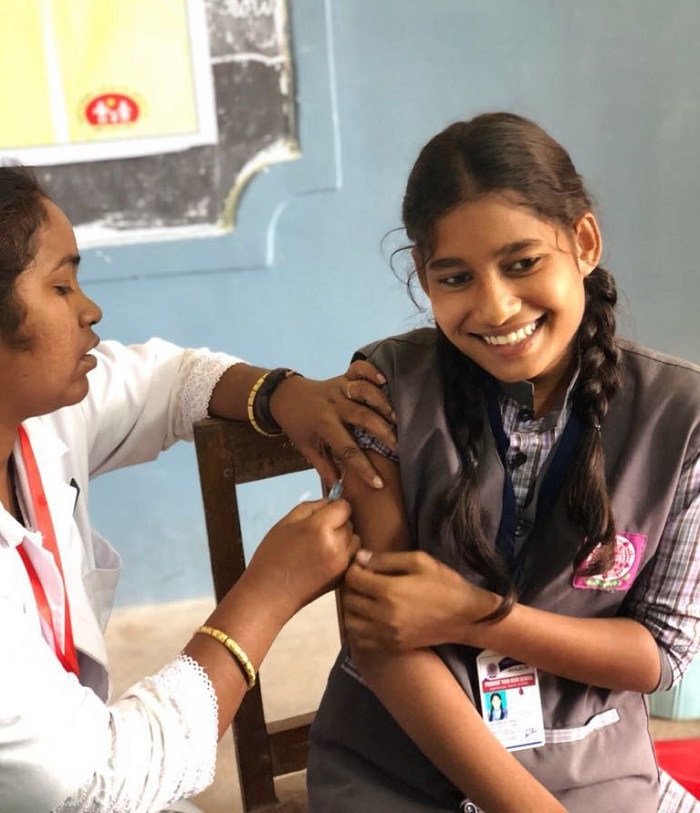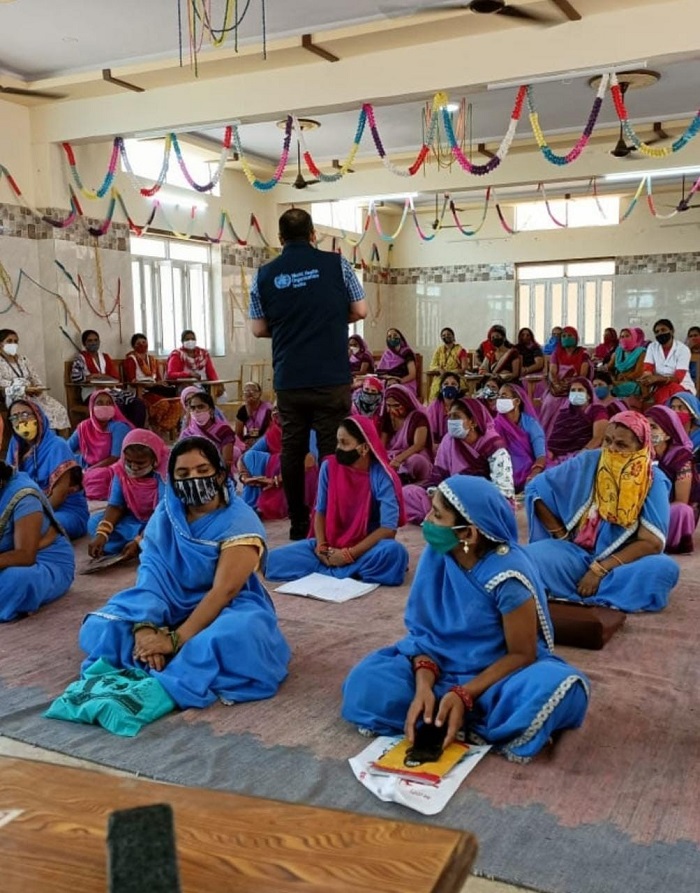India observes 16 March as National Immunization Day (NID) to highlight the importance of full immunization to reduce illness and deaths associated with vaccine-preventable diseases (VPDs). The country has launched the Intensified Mission Indradhanush (IMI) 4.0 in phases in 2022 to achieve its goal of providing full immunization coverage of 90% and beyond to boost the reach of the universal immunization programme, under which more than 3 crore pregnant women and 2.6 crore children are vaccinated each year.
NID also coincides with the international Measles Immunization Day. Measles and rubella (MR) elimination is a national health priority. The measles virus is one of the world’s most contagious human viruses that kills more than 100 000 children every year globally, and rubella is a leading vaccine-preventable cause of birth defects. Both measles and rubella can be prevented by just two doses of a safe and effective vaccine. Over the past two decades, the measles vaccine is estimated to have averted more than 30 million (M) deaths globally.

India has vaccinated over 324 M children against measles and rubella between 2017 and 2020 through the measles-rubella vaccination campaign (©WHO India)
India has adopted the National Strategic Plan for Achieving and Sustaining Measles and Rubella Elimination in India and has vaccinated over 324 M children between 2017 and 2020 through the MR vaccination campaign.
Despite the challenges caused by the COVID-19 pandemic that overburdened health systems, India has made remarkable progress in the elimination of MR.
Fever and rash surveillance were extended to all parts of the country in 2021, while the MR laboratories network further expanded to include 27 laboratories. Other actions included the strengthening of routine immunization during the pandemic, including the vaccination of around 1 M children during IMI 3.0.
The results showed. Over the last six months of 2021, India achieved the global standard non-measles non-rubella discard rate of 2 per 100 000 population for the first time ever.

A workshop on transitioning to fever and rash measles rubella surveillance in Delhi in August 2021 (©WHO India)
The country is moving towards the MR elimination goal of achieving and sustaining vaccination coverage of 95% with two doses of a measles- and rubella-containing vaccine at the national and subnational levels.
India has made significant improvements in MR surveillance following the second COVID-19 wave. Now is the time to further strengthen routine immunization through intensified efforts to close immunity gaps through Intensified Mission Indradhanush, with a special focus on the first and second dose of measles- and rubella-containing vaccines.
The country is also prioritising continued implementation of key strategies for strengthening surveillance, including the sensitisation of front-line workers, increasing active case searches, expansion of the reporting network, rapid response to outbreaks, and establishing synergistic linkages between MR elimination and other public health priorities, such as health systems strengthening and emergency preparedness and response.

WHO facilitating training of frontline health workers on block-level fever and rash measles-rubella surveillance in Rajasthan in October 2021 (©WHO India)
WHO Country Office for India is supporting the Government of India and state governments towards reaching key elimination targets. With WHO support, since April 2021, over 280 000 health workers have participated in state, district and block workshops on the transition to fever and rash surveillance throughout the country. WHO has also provided technical assistance and monitoring for all rounds of IMI to support immunization strengthening.
“We can reach MR elimination goals in India if we strengthen surveillance by finding, investigating, and collecting and testing a sample for every suspected case, in each district in every state and UT,” said Dr Roderico H. Ofrin, WHO Country Representative to India.
“Disease elimination is not business as usual. Collaborations between the governments at every level, partners and the community to close immunity gaps is critical. WHO-NPSP teams have supported the Government of India in strengthening MR surveillance system and immunization across states and UTs to attain and sustain high population immunity. This is critical for elimination. India has done it before. India will do it again,” said Dr Ofrin.
